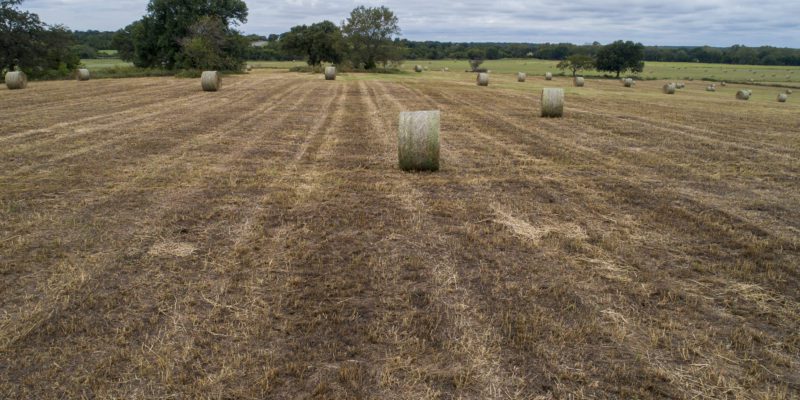Knowledge is power. Fully understanding your property, it’s value and everything you want out of the sale is vital to realizing full value.
Choosing to sell is a significant decision that necessitates a deep understanding of various factors to ensure you make informed, strategic choices. Our team at CJ Auction is dedicated to clarifying the sales process and providing you with the critical insights needed to move forward confidently.
To help you make informed, strategic choices, we’ve compiled a list of 20 questions that we’ve found our most successful sellers fully understood as they made their decision to sell. Each question is designed to help you unlock the full potential of your property sale.
What determines my lands value?
The market value of your ranch is influenced by several factors including size, location, available resources (water, minerals), access, timing and market conditions. Many landowners make the mistake of basing their price expectation on a neighbor’s sale results while ignoring all other factors. We recommend basing your expectations on a professional valuation that considers multiple factors. can provide an estimate, considering current market trends and recent sales of similar properties. Understanding this value is crucial for setting a realistically competitive price point.
What are the tax implications of selling my ranch land?
Selling ranch land can result in capital gains tax on the profit from the sale, depending on the length of ownership and the amount gained. There might be options to reduce this tax burden, such as a 1031 exchange. Consulting with a tax professional can provide strategies to minimize taxes and clarify any impacts on your financial situation.
How should I prepare my ranch land for sale?
Preparation can involve clearing debris, making necessary repairs, and ensuring all utilities are in good working condition. Additionally, consider attractive staging of living quarters and any other usable structures to highlight the potential of the ranch. Completing any pending land use applications or permits can also increase the land’s appeal.
What legal restrictions or zoning regulations might impact my sale?
Understanding local zoning laws is vital as they dictate land use. Restrictions can significantly affect the land’s marketability and potential uses by the new owner. Engage with local authorities or a real estate lawyer to ensure compliance and discover if any restrictions could be modified or lifted prior to sale.
What documentation is needed to sell ranch land?
Proper documentation includes the current deed, recent land surveys, any warranties, rights of access, and titles. Environmental and geotechnical assessments can also bolster your selling position by providing clear information to potential buyers on the land’s condition and capabilities.
Should I consider subdividing the land before selling?
Subdividing can potentially increase your land’s value by making it accessible to a wider range of buyers. However, the process requires careful planning and adherence to local regulations. Evaluate the costs and benefits with professionals to decide if this is a viable option for your property.
Who might be potential buyers for my ranch land?
Potential buyers may include private individuals seeking a rural lifestyle, investors looking for valuable land, or businesses interested in agricultural opportunities. Understanding the unique features of your ranch can help target your marketing towards those most likely to be interested.
How long might it take to sell the ranch land?
The time frame can vary widely based on market conditions, the property’s price, and its unique attributes. Historically, specialized properties like ranch lands may take longer to sell than residential homes due to a smaller pool of potential buyers.
What are the costs associated with selling?
Sellers can expect to incur costs including real estate agent commissions, advertising fees, legal expenses, and possibly capital gains taxes. Preparing and staging the land for sale may also entail additional costs.
What’s the best time to sell ranch land?
Market conditions can fluctuate seasonally and annually. Generally, selling during a seller’s market—when demand is high and supply is low—can yield higher prices. Analyzing market trends and consulting with a real estate expert can help determine the optimal timing.
What marketing strategies should I use to attract buyers?
Effective marketing strategies may include online listings on specialized real estate platforms, social media marketing, virtual tours, and engaging with local and national real estate agents who specialize in ranch lands. High-quality photographs and drone video footage can significantly enhance appeal. Be sure to know how any real estate professional that you’re may retain plans to market your land and what marketing resources they’ll put to work for you.
Are there any environmental or conservation considerations?
Some sellers find value in marketing their land for conservation purposes, which can attract a niche market of buyers interested in preservation. Participating in conservation programs may also offer tax benefits.
What utilities and infrastructure are available on the land?
The presence of water sources, power lines, access roads, and internet connectivity can greatly influence potential use and the subsequent buyer pool. Ensure detailed information on the state and availability of these utilities is available to prospective buyers.
Can I retain certain rights to the land after selling it?
It’s possible to sell the land while retaining specific rights, such as mineral or water rights. Such arrangements should be clearly outlined in the sales agreement to avoid any future disputes.
What is the economic potential of the ranch land?
Buyers are often interested in the revenue-generating potential of the land, whether through agriculture, leasing, recreational use, or conservation programs. Highlighting these opportunities can make the property more attractive.
What are the local market factors that may impact my sale?
There are factors that impact your potential sale that you can control and other that you can’t. Most landowners easily acknowledge the factors they control. Many struggle to consider those that aren’t in their control but heavily impact sales success such as local demand, competitive availability, and government policies.
How negotiable am I on the selling price?
Know your bottom line. Decide in advance how flexible you are willing to be on the price. Set an aggressively fair selling price above the lowest offer you’re willing to accept. Being open to negotiation can make all the difference in a successful sale.
What steps should I take to ensure a smooth closing process?
A smooth closing process relies on clear communication, all necessary documentation being in order, and understanding the timeline. Working with experienced professionals can mitigate surprises and ensure a successful transaction.
Should I consult legal and financial professionals before selling?
Absolutely. Selling ranch land is a significant decision with many moving parts. Navigating those complexities often requires expertise beyond the average seller’s knowledge. Consulting with legal and financial advisors can help you fully understand sale implications, minimize potential risks and ensure no surprises.
By thoroughly addressing these areas, sellers can approach the market confidently, prepared to effectively engage potential buyers.
Should I sell via auction or traditional listing?
While selling the land yourself can save on commission fees, a qualified real estate agent with experience in ranch lands can significantly simplify the process. They have market insight, marketing tools, and negotiation skills that can help secure the best deal. Consider your personal experience, the complexity of the sale, and how much time you can dedicate to the process before deciding.
You have two main options when selling your real estate: listing or auction. Both offer advantages and disadvantages. Understanding your answers to the above questions should help guide your decision.
Auction is an accelerated sale method with aggressive marketing that creates demand and buyer interest. The primary benefits of selling at auction are control, urgency, full transparency, and no-hassle. With an auction, you’ll know when your property will sell because you set your sale date. Those who attend auctions are serious buyers eager to make competitive bids. There are no contingencies or drown-out negotiations. And your property sells ‘as-is’ so you don’t have to handle repairs or negotiate with a buyer before closing the sale.
Listing allows you to set your asking price then wait for a buyer to come to you. The primary benefits of listing are negotiation flexibility, time to consider offers and more time for the right buyer to find your property. With listing, you determine your asking price, can be involved with showing potential buyers your land and what makes it unique. Then take the time to fully evaluate multiple offers choosing the one that best suits your needs and terms.
Thinking of Selling Your Land? CJ Real Estate Can Help
We are real estate experts specializing in ranch, residential and commercial land sales. Whether you need to diversify assets quickly for top-dollar via auction or are prepared to list and wait for a buyer to come to you, the CJ Real Estate team provides comprehensive solutions and proven sales performance. When results matter, choose CJ Real Estate.








